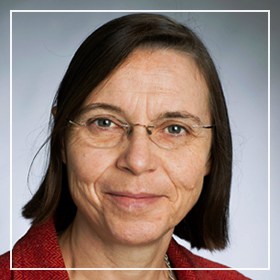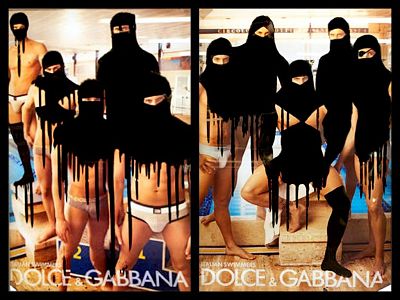On June 11th 2018, David Graeber published an apology about the amount of time it took him to understand the extent of what was going wrong within HAU – both within the journal and its associated publications and activities.[1] Graeber had been the Editor-at-Large of the journal from its beginnings in 2012 until late December 2017, when his name was removed from HAU’s masthead. This public announcement, the latest in a series of efforts he had made to do something about what he had heard was going on at HAU, took some guts; Graeber knew he was inviting people to shoot the messenger, and some people duly did do that. Whatever people think of the message or its timing, there is no doubt that it finally triggered an intense public debate when there had been no such debate before. Other attempts to address issues behind the scenes had failed – and I should know, as I was amongst those who had tried some quieter options without any effect.
Before this event, many working at HAU were seriously worried about going public for two reasons. First, that if a scandal broke out it might spell the end of the journal, and that would add insult to injury: dozens of people had burned the midnight oil and given enormous amounts of their labour to bring HAU into existence. Most had done so for political as much as intellectual or professional reasons: they believed in the idea of an open access journal designed and controlled by anthropologists themselves: not by the big multinational publishers, nor by the universities or funding bodies, but by a transnational collaboration of scholars within anthropology working together. That is certainly what motivated me to become involved when I did not actually have any time to spare.
Seeing HAU fail was not wanted by anyone that was involved with the project that I had met, even those who expressed the strongest statements about the intimidation, gaslighting and aggression directed towards them when they were working there.
This level of political support for HAU is hard to remember now, because one aspect of the social media debate has focused on its failings as a radical political project: many have noted that HAU was developed in, and supported by, elite western universities (Cambridge and Chicago in particular); that it was publishing many of the A-list western world anthropologists, and re-publishing many of the classics that created the foundations of that elite, masculinist, grip on the discipline, with virtually no recognition of the implicit historical inequalities and biases that this was reproducing; that it was reliant upon a dense, highly northern-hemisphere-based network of insiders, who used the journal and book series as a vehicle to consolidate their own power, in the face of more recent challenges by anti-colonial, anti-racist, feminist, and LGBTQI efforts. What is more, even the name of the project, HAU, was borrowed from Māori without so much as a discussion with Māori people about it. In addition, there were others, more based in Europe and some parts of Latin America rather than the US, who attacked the journal’s approach using critiques circulating around issues of class and the diverse forms of capitalism: HAU turned out, for those critics, to be yet another project that was deeply soaked in the inequalities and the academic precarity generated by neoliberal capitalist structures and ideals, and should never have been supported by so many anthropologists in the first place.
By the time the social media discussing these kinds of arguments had had their say on the HAU project, it became hard to understand why so many people felt so passionately about it when it had begun. The project had focused squarely on open access and the idea that anthropology needed to get back to taking ethnography seriously in developing its concepts, rather than borrowing from western philosophers (which could also be seen as a neo-colonial, masculinist practice). Yet at the time at HAU, everyone was so busy trying to meet the next impossible deadline that these additional political issues circulating in anthropology more widely, and brought up in the subsequent social media storm, were not a strong focus. Moreover, there was nothing in the structure of the project that would ensure that such issues would be critically examined on a regular basis.
In short: questions about how the project would be structured, questions about its political and moral positioning, and also questions about what its intellectual project really was, and why that project rather than the many available alternatives, were sidelined at HAU.
This is an important lesson: it is not a good idea to begin such an enterprise before that process of thinking and structuring has been carried out, at least to a reasonable degree of depth.
In any case, and this is the second reason that little was said in public once the troubles began to emerge, confidentiality clauses had been included in just about every contract that HAU issued, and was also written into HAU’s constitution. Absolutely no dirty laundry was to be hung out in public, and the threat of some kind of sanction – legal, financial or reputational – was always hanging in the air if anyone was considering it. People were frightened. In the early days, it did strike me, along with a number of other people, as somewhat odd that such an open access and, in principle at least, collective effort should emphasise secrecy so much, and should also have a constitution written in such a way that the Editor-in-Chief held virtually unimpeachable power. Indeed, several people (including myself) said so at the time. Yet this was a small, informal, idealistic project based on trust and mutual excitement about its potential; everyone imagined that everything could be ironed out later. In any case, nobody really had the time to go through the articles and sections of the constitution more than once to check whether suggested changes had been implemented; it would be sorted at some later date if it needed refinement, as this was just the beginning.
That level of inattention was definitely a mistake: we should all have made the time, asked the awkward questions, and put in place rigorous structures to provide for a separation of powers. It would be too late once the enterprise got going. For me, that I let this slide was especially ironic: my doctorate had been a study of radical and revolutionary lesbian feminist separatism in London. In the course of that research, I had learned a huge amount about what Jo Freeman famously called “The Tyranny of Structurelessness:” the fact that when there are no pre-arranged rules to deal with trouble when it happens, then there is no way to protect the vulnerable, and the most manipulative, aggressive, and anti-democratic people tend to float to the top.[2] Throughout the period when I began to understand something about the problems that had developed at HAU, the lessons I learned from those feminist separatists in London kept returning to haunt me. I should have listened to my own formative ethnographic experience more carefully.
On that point, and just in case I am misunderstood by those who do not know either Freeman’s work or my own rather ancient ethnography: contrary to the assumption that LGBTQI people or feminists (and I count myself as being both) are all much the same because of their politics, I found, just as Freeman had in women’s consciousness-raising groups in the 1960s and 1970s, that some of the most politically passionate and committed people in those groups were also occasionally amongst the most anti-democratic and fundamentally power-hungry people I had ever met. Being on the right side of a political argument does not excuse obnoxious behavior. The need for structures to deal with obnoxiousness (and sometimes worse) in passionate small groups had been completely obvious to me in the late 1980s. Clearly, I had not properly remembered that lesson by the time I became involved with HAU as the Chair of the External Advisory Board (EAB). The EAB had been set up in a way that made it effectively powerless to either carry out its tasks or enforce any recommendations. Most importantly, there was no separation between the EAB and the Editor-in-Chief, who was a member of the EAB. In practice, this turned the EAB into window-dressing.
Back to this summer of 2018: when Graeber lifted the public lid by publishing that apology, it sparked a veritable explosion of debate on social media, an excellent summary of which can be found on Hilary Agro’s Twitter page.[3] Many other posts, blogs, pages and articles have appeared since that initial explosion in June 2018, expressing all kinds of opinions about the matter. Within those many and varied discussions, some of the pent-up anger, fear, and frustration felt by many who worked at HAU was expressed. The statements from those directly affected (as opposed to the thousands of opinions from those who had not been directly involved) appeared anonymously in two letters. The first was a letter collectively written by seven former staff members at HAU, originally prepared in December 2017, and published in the Footnotes blog on June 13th 2018.[4] The second was published on June 14th by four more members of HAU staff, both current and past.[5] Both the contents of those letters and the fact that they were anonymous spoke reams about the problems that had confronted those working at HAU: the accusations were serious and collectively expressed, yet these authors were still too terrified to identify themselves, even as a group.
The tyranny of the structurelessness in this case was entirely obvious to see.
Also somewhat ironically, this structurelessness was highly structured: as Ilana Gershon analysed in her blog in Allegra on what had happened at HAU, the open access software used to run the project could be used to propagate hierarchical knowledge sharing: the Editor-in-Chief could see everything that everyone was doing, but other people had more limited views.[6] Nobody, except the Editor-in-Chief, Giovanni da Col, knew much at all about what was happening at HAU. Even as chair of the EAB, I had no knowledge or experience of what was happening on a day to day basis within the project: there was no office to be visited, or even electronic place where I could somehow follow what was happening. People who worked at HAU were scattered across the planet and communicated individually and electronically.
On June 17th, I made a statement on my Facebook page about #HAUTalk, as the former chair of the External Advisory Board (EAB).[7] In it, I made the point that there were crucial faults in the way the HAU enterprise was structured, and in particular, an absence of a separation of powers, which prevented any kind of proper oversight, so that if something went wrong at the top of the organization (i.e. in the person of the Editor-in-Chief), there was no way, in practice, to enforce any changes, because no changes could be made without the agreement of the Editor-in-Chief. That created an impasse that I was unable to resolve. For that reason, when I left the EAB and resigned from the editorial board in May 2017, I wrote a final report in which I recommended that the EAB should be disbanded and replaced with something that had power, an executive board. An interim chair for the EAB, Carole McGranahan, was appointed to set up any changes the EAB decided to adopt.
Between May and the autumn of 2017, I deliberately avoided involvement in HAU, having handed over to the new interim chair. The EAB was replaced by a Board of Trustees of the Society for Ethnographic Theory (SET) in January 2018, after SET became a corporation registered in Companies House in the UK. Yet the founding director of the new company was the Editor-in-Chief, Giovanni da Col. Although this legal structure gave the Trustees considerably more power than the EAB had enjoyed, the inclusion of the Editor-in-Chief as a director struck me as highly problematic. I had strongly advised that there should be a separation of powers between the editor and any board that was supposed to have oversight over the organization, the lack of which in the previous arrangement had been key to the EAB’s inability to act.
In the run-up to this change, during the autumn of 2017, I began receiving informal reports that serious problems were still occurring at HAU, despite all the transformations underway. Several appeals to the interim EAB chair made by a number of people between the end of 2017 and early 2018 (not yet knowing that by January 2018, the EAB had been replaced by SET) were not met with any significant response. Indeed, the concerns expressed to the EAB from late 2017 onwards seemed to be interpreted at HAU as being only attacks, acts whose only purpose were assumed to be attempts to harm HAU for some unspecified reason; as such, they were defensively rejected out of hand, rather than being taken seriously in terms of their content.
That was the background that led to the release of the public statement by Graeber. And in addition to my own statement on Facebook on June 17th, I also signed a petition jointly written by Ilana Gershon, David Graeber, myself and Keir Martin, published on June 18.[8] Given the relative lack of response from the Trustees, this petition was a call for action: it requested a full investigation of the accusations against the Editor-in-Chief of HAU, Giovanni da Col; that he be suspended from his position until this investigation was completed; that a set of rigorous and enforceable structures should be put in place to ensure that no abuses of power occurred in future, and that if they did, there were procedures for catching them and dealing with them; and to ask that the whole question of open access be thought about again at HAU, given the journal’s recent move to be published by University of Chicago Press, and shifting towards a more standard subscription and green open access model. The petition was signed by over 600 people, only a handful of which were obviously invented names.
On June 29th, and after a tumultuous 18 days of social media debate, the remaining Trustees of the Society for Ethnographic Theory (the majority of the Trustees had resigned by that stage) sent out an announcement, stating that they were suspending Giovanni da Col from his post as Editor-in-Chief, that they endorsed the move to “redress power inequities, bullying and all manner of harassment,” and that they were appointing an interim editor while they negotiated the terms of Giovanni da Col’s resignation.[9] It looked like, at long last, the issues were being addressed by a body that had the power to do something, and had now, at least temporarily, created a sufficient separation of powers in order to be able to actually carry out the work needed.
Yet in practice, nothing appears to have actually happened. At the time of my writing this, October 10, 2018, Giovanni da Col’s name still appears as Editor-in-Chief of the journal; no interim editor that I am aware of has been announced; no results of any audits of accounts or investigations have been made public; no statement about what happens next has been made, and no commentary on any form of redress or apology to those harmed by their experience with HAU has been made.
In fact, there has been no news at all from the Trustees about any of the issues that were raised during the social media storm since June 29th. Surely enough time has passed now for an update on progress?
I am writing this now both to provide an alternative narrative to the others currently available on social media (especially of the ‘shoot the messenger’ kind), and to remind people of the core problem that originally sparked the debate – publicly airing the situation at HAU and attempts to have the problems properly inquired into and identified, to request acknowledgement of, and at the very last apologise for, the harm caused where that is merited, and to try and fix things to prevent similar conditions in future. As the debate developed into lengthy discussions about a variety of wider issues, those matters seem to have become somewhat lost in the mix. It would be wonderful if the remaining Trustees would work to help to complete that task.
[1] https://davidgraeber.industries/sundries/hau-apology
[2] https://www.jofreeman.com/joreen/tyranny.htm . See also Green, Sarah 1997. Urban Amazons: Lesbian Feminism and Beyond in the Gender, Sexuality and Identity Battles of London London: Macmillan.
[3] https://twitter.com/hilaryagro/status/1006995504205459456
[4] https://footnotesblog.com/2018/06/13/guest-post-an-open-letter-from-the-former-hau-staff-7/
[5] https://haustaffletter.wordpress.com/
[6] https://allegralaboratory.net/pyramid-scheme-hautalk/
[7] https://www.facebook.com/sarah.f.green.7/grid?lst=590459156%3A590459156%3A1538843798
[8] https://docs.google.com/forms/d/e/1FAIpQLSe93a8JsWa_8Yd5Bs37oPjDFsi3pAPmZ8tDI4Tsjv2vvVvpqg/viewform
[9] https://twitter.com/haujournal/status/1012718350567395328






Quick correction pointed out to me: David Graeber was involved in Hau since its inception in 2011, not 2012, as I have written above.